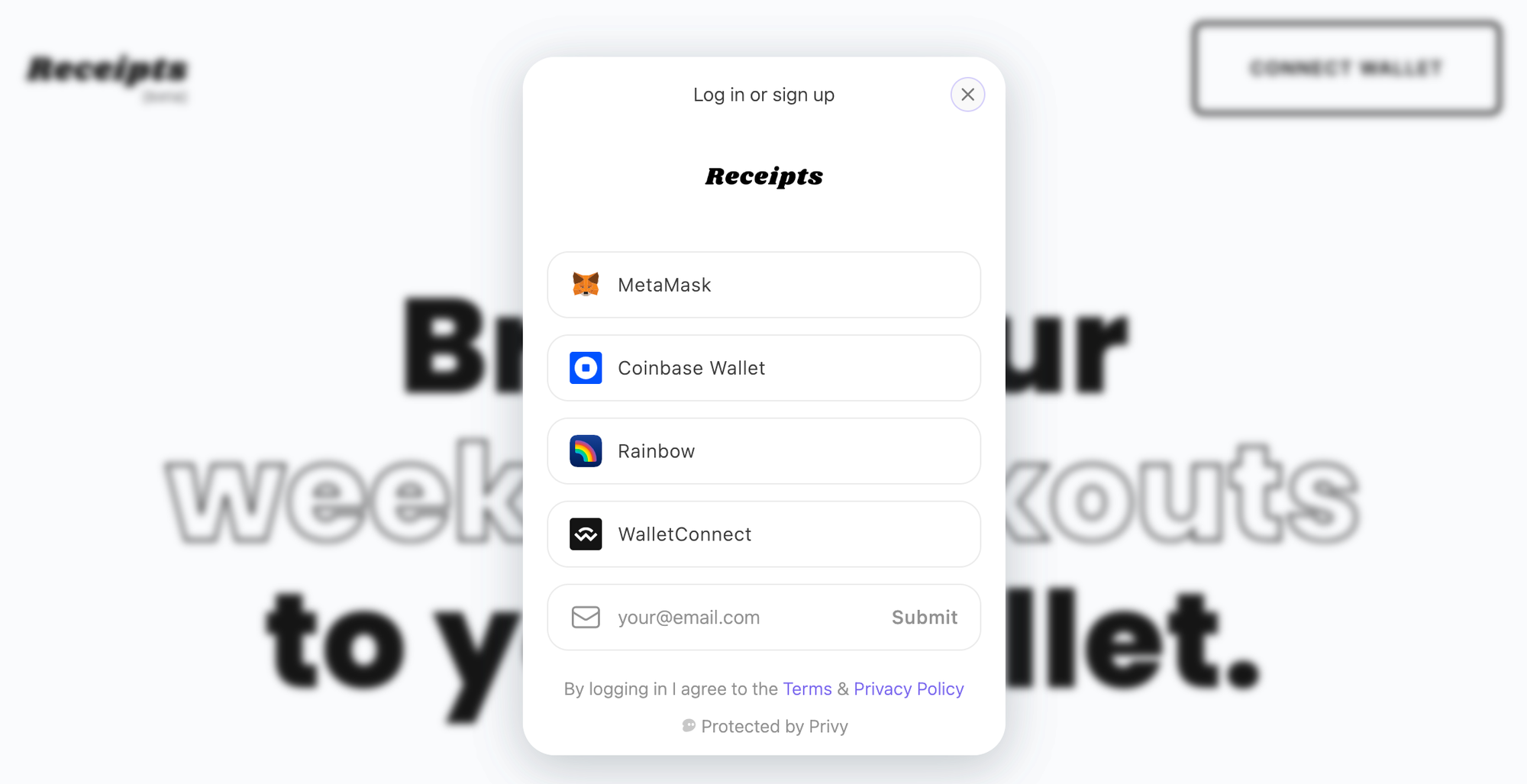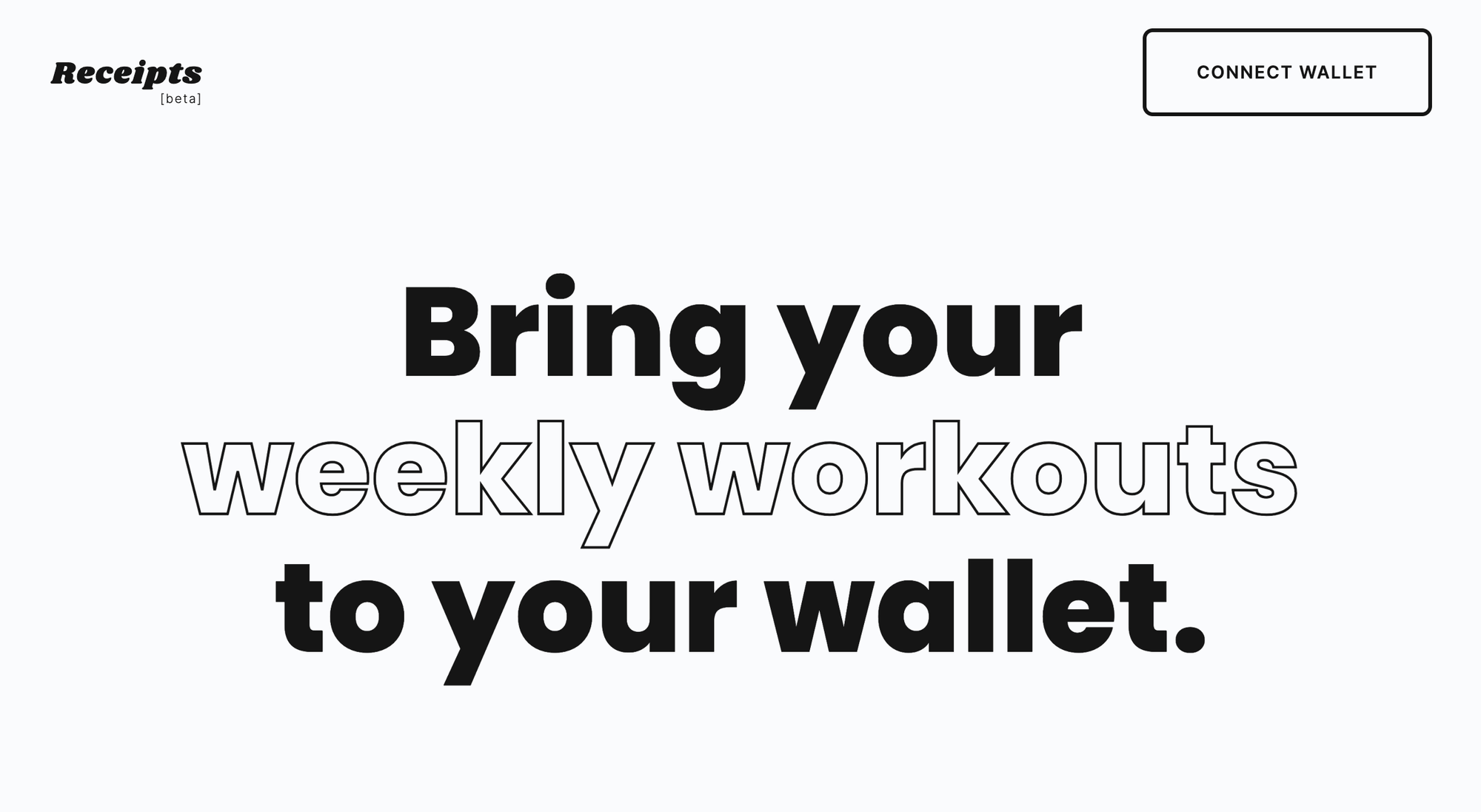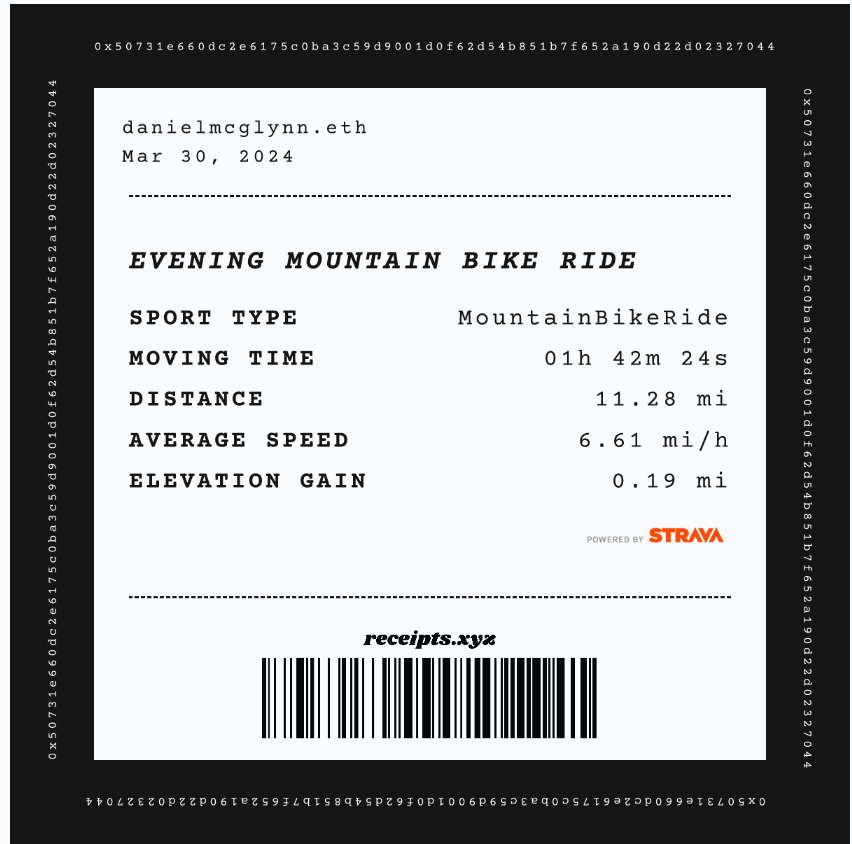Save the Receipts | Onchain accountability
Receipts makes it possible to bring personal fitness data onchain. Via a data attestation mechanism, Receipts makes it possible to mint workout data and participate in fitness challenges.

Receipts is a new kind of fitness app that documents workouts onchain.
The app connects to Strava, a popular web2 fitness tracker, and then allows users to record workouts, run them through an attestation service, and save the workout in a web3 wallet as an NFT.
Receipts is still in beta, but longer term it sounds like the goal is to connect more fitness trackers.
This is the second part of a short series on what the move onchain looks like. Check out the other post here: March Madness onchain.
We will unpack how Receipts works and why it’s a novel onchain use case, but let’s jump right to the main takeaway first.
One of the biggest and most interesting use cases for the onchain movement is the ability to take real-world data and information and ingest it into the internet and make it actionable. But bringing real-world data onchain is a complex and fascinating engineering problem.

A crux of the problem is creating reliable data confirmation systems so that it’s actually usable onchain and not just a bunch of nonsense.
Right now a lot of infrastructure is being built, things like data oracles and attestation services, to efficiently and accurately connect up real-world events with onchain mechanisms.
A lot of this infrastructure was originally designed to make decentralized finance more robust and to be able to tokenize more real-world assets. Now the same infrastructure can provide other uses — like verifying actions and providing social proof and accountability.
This is where Receipts come in.
Sweat, attest, mint, repeat
The first step in getting started with Receipts is to connect a web3 wallet. Common options for this include MetaMask, Coinbase Wallet, Rainbow, etc. These wallets are designed to send and receive digital assets like a standard software-based crypto wallet, but they also have the added functionality of connecting to onchain apps.

You’ll notice that you can also sign up with an email. I haven’t tried this option, but I have seen this with other onchain apps. Often the email option allows people to get started with the app, but there might be limited functionality until the full wallet is connected. This is becoming more common and feels like a good introductory step.
The next step is to connect your fitness tracker. For now, as mentioned earlier, the only option is Strava, but it sounds like adding more fitness app functionality is on the roadmap.

In terms of overall architecture, you can think of Strava as a data source, and Receipts is serving the function of a data oracle — or a node that can bridge between real-world data and an onchain network.
Conceptually, this is a simple framework that will have big implications. As more real-world data and assets migrate onchain, oracles will become more significant and likely play a major role in future blockchain innovation.
But back to our workout. The next step in the Receipts flow is to use an attestation service to verify the workout onchain. Attestation is an important step in bringing new information onchain (more on this below) in a way that supports data accuracy and integrity (otherwise, what's the point?)
If there is a downside or an easy critique of an app like Receipts, it’s that I could just make stuff up — like I could say that I just completed a 20-mile run at a six-minute mile pace, add that to Strava, and then run it through the attestation process and call it a day.
In the case of a workout, it probably doesn’t matter that much, but in the case of bringing real-world data onchain in a verifiable way, making stuff up would be a big deal.
It sounds like future versions of Receipts will tackle this problem so that there is a way to have more confidence in the validity of tracked workout data.
Once a workout goes through attestation, the next and final step in the process is minting a non-fungible token (NFT) of the event.

Right now, minting a post-workout NFT might seem like a novelty, but you could imagine a lot of use cases for being able to prove you did what you said you were going to do, and then being able to have some kind of record that is shareable.
And it’s once you start getting into the proof of concept stuff that an app like Receipts gets exciting.
Back to the big picture
To me the big deal isn’t the functionality of minting my daily workout, it’s the idea that there are systems in development that will allow me to create data (like a record of my workout), verify and confirm it onchain (like through an attestation service) and then have some kind of output (like an NFT).
The reason this is exciting is that it provides a path for bringing other personal data onchain and then providing a simple-to-use mechanism to do more with that data, such as sell or trade the NFT for something else.
If we had a few minutes, we could probably spin up a list of where this could be useful. I could see this happening for product reviews, or it could allow me to participate in health and behavioral studies, or maybe I could take action to get course credit if I was still a student — you get the idea. Suddenly, there is a mechanism to create value through personal data.
The best part? Since this is all built on a web3 wallet architecture, I’m able to have control over how that data is used and where it ultimately ends up.
So while it’s fun to post workouts onchain while I try to get yoked, that use case alone doesn’t move the needle toward a better internet. But, if minting my workout data is the first step in a larger mission to make my personal information more valuable — or give me the tools to create and monetize my data, then I’m all about it.
Looking to do more onchain?
Here are a couple other ideas about how to make the move.

